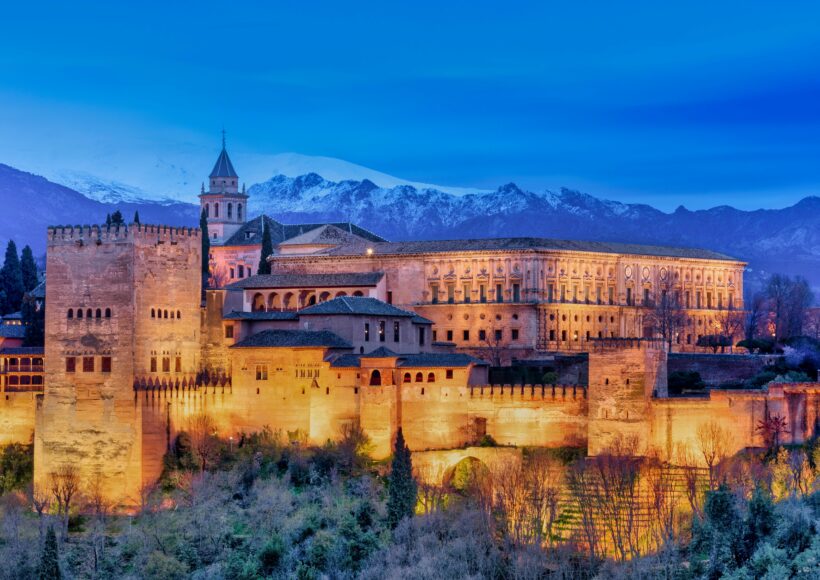Article Title: Discovering Andalusia: Spain’s Cultural and Historical Heartland
Published by:
Author: Louis Shannon
Date: September 21, 2024
Organization: MOBT Global
Discovering Andalusia: Spain’s Cultural and Historical Heartland
Andalusia, the southernmost region of Spain, is a vibrant and culturally rich area that has played a significant role in shaping the country’s identity. With its captivating blend of Moorish architecture, traditional flamenco music, and Mediterranean landscapes, Andalusia offers visitors an unforgettable journey through Spain’s history and soul. Stretching from the Sierra Nevada mountains to the Mediterranean and Atlantic coasts, Andalusia is as diverse in its natural beauty as it is in its cultural offerings.
A Glimpse Into History
Andalusia’s history is marked by centuries of coexistence between different civilizations, each leaving behind a profound cultural and architectural legacy. The most notable of these influences is the Moorish period, which lasted from the 8th to the 15th century. This era gave rise to some of Spain’s most famous landmarks, such as the Alhambra in Granada, a stunning palace and fortress that is now a UNESCO World Heritage site. The intricate Islamic art, tranquil courtyards, and lush gardens of the Alhambra offer a glimpse into the opulence and advanced craftsmanship of the time.
Another emblematic city is Córdoba, home to the Mezquita-Catedral, a remarkable mosque-cathedral that embodies the region’s history of religious and cultural fusion. Originally built as a mosque during the height of the Moorish reign, the structure was later converted into a cathedral after the Reconquista, symbolizing the region’s complex and multi-layered history.

Andalusian Culture: Flamenco and Festivals
When one thinks of Andalusia, flamenco often comes to mind. This passionate art form, which blends dance, song, and guitar, is a reflection of the deep emotions and struggles of the Andalusian people. Flamenco has its roots in the Roma (Gypsy) communities of southern Spain, but it has evolved over centuries to become a symbol of Spanish culture worldwide. Cities like Seville and Jerez de la Frontera are famous for their flamenco performances, where visitors can experience the intensity and beauty of this expressive dance form.
Andalusia is also known for its spectacular festivals. One of the most famous is Semana Santa (Holy Week), a deeply religious event held during the week leading up to Easter. In cities like Seville and Málaga, elaborate processions take place, featuring ornate floats, religious statues, and participants dressed in traditional attire. The fervor and devotion displayed during Semana Santa highlight the strong Catholic traditions that remain influential in the region.
The Feria de Abril in Seville is another must-see event, a lively spring fair where the streets fill with horse-drawn carriages, flamenco dancers, and brightly decorated tents. Andalusians don traditional attire, with women wearing trajes de flamenca (flamenco dresses), and the festival is a celebration of Andalusian culture, music, and joy.

Natural Beauty: Mountains, Beaches, and White Villages
In addition to its rich cultural heritage, Andalusia boasts some of the most stunning landscapes in Spain. The Sierra Nevada, Europe’s southernmost ski resort, offers breathtaking views and hiking opportunities for nature lovers, while the coastlines of Costa del Sol and Costa de la Luz attract sun-seekers from around the world. These beaches are known for their soft sands and warm, clear waters, making Andalusia a prime destination for relaxation and outdoor activities.
Inland, Andalusia is home to the famous pueblos blancos (white villages), such as Ronda and Mijas. These picturesque towns, with their whitewashed houses and narrow, winding streets, are nestled in the hills and provide a serene escape from the bustle of the larger cities. Ronda, in particular, is famous for its dramatic setting atop a deep gorge, offering some of the most striking views in the region.

Gastronomy: A Taste of Andalusia
Andalusian cuisine is a reflection of the region’s diverse history and geography. Gazpacho, a cold tomato soup made with fresh vegetables, is a refreshing dish popular during the hot summer months, while salmorejo, a thicker variant, is a local favorite in Córdoba. Tapas, small plates of food that are perfect for sharing, originated in Andalusia and are still an essential part of the dining experience. Visitors can savor local delicacies such as jamón ibérico (Iberian ham), fried fish (especially in coastal areas), and flamenquín, a rolled and fried pork dish.
In addition, Andalusia is known for producing some of Spain’s finest sherries in the Jerez region. Sherry, a fortified wine, ranges from dry and crisp to sweet and rich, and is an integral part of Andalusian culture, often enjoyed with tapas or desserts.
The Spirit of Andalusia
At its core, Andalusia is a region of contrasts—where ancient history meets vibrant modern culture, and where the serene beauty of its landscapes blends with the passionate intensity of its art and festivals. Whether you’re exploring the magnificent Alcázar of Seville, watching a flamenco performance in Jerez, or simply enjoying a leisurely meal by the sea, Andalusia offers an unparalleled experience of Spanish life and heritage.
